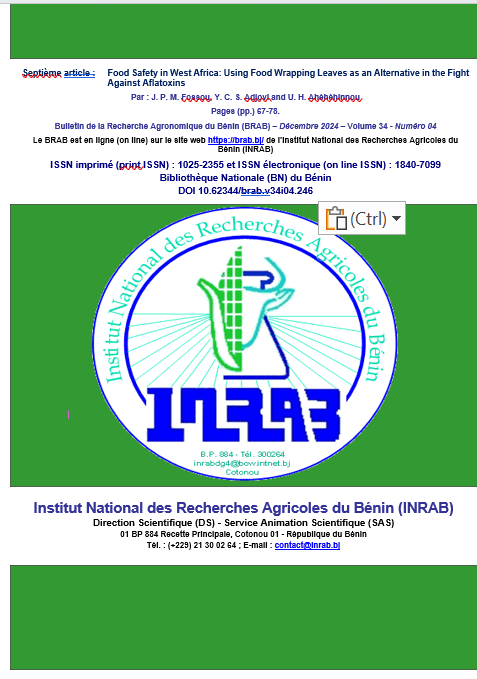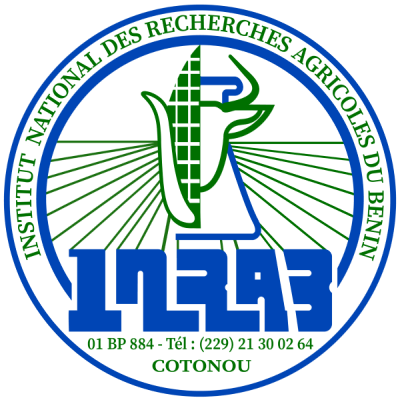Food Safety in West Africa: Using Food Wrapping Leaves as an Alternative in the Fight Against Aflatoxins
DOI:
https://doi.org/10.62344/brab.v34i04.246Keywords:
liver diseases, Aspergillus flavus, agricultural production, public health, mycotoxinsAbstract
Aflatoxins are among the most dangerous food toxins in the world. One of them, aflatoxin B1, is associated with severe diseases in both humans and animals. It is mainly produced in the field but especially during the storage of foodstuffs by certain filamentous fungi from the Aspergillus section Flavi. The objective of the study was to evaluate the antifungal and anti-aflatoxin B1 potential of the leaves of Tectona grandis, Gmelina arborea and Manihot esculenta, three ubiquitous species traditionally used as food wrappers in Benin:. A phytochemical screening was performed on all the leaves. The activity of their aqueous extracts was tested on the AFc5 reference strain (GenBank KC153995.1) in vitro and on maize under simulated storage conditions. Aflatoxin B1 production was assessed by thin-layer chromatography. Manihot esculenta showed high levels of alkaloids, terpenes, and polyphenols. Tectona grandis and Gmelina arborea exhibited the best activity in disrupting pigmentation and texture. Tectona grandis induced the production of defensive secondary metabolites such as brown, viscous exudates and a large quantity of large, clustered sclerotia. Manihot esculenta and Gmelina arborea led to the production of less abundant, smaller, dispersed sclerotia, with transparent, fluid exudates. All aqueous extracts caused morphological changes in AFc5 and inhibited AFB1 production in vitro. On maize stored under conditions favourable to AFB1 production, despite significant fungal development, Manihot esculenta, Tectona grandis and Gmelina arborea inhibited AFB1 production up to the 40th day, where a slight production was observed with the last extract. The utilization of these vegetable species for controlling fungal proliferation and aflatoxin B1 biosynthesis can represent an interesting natural alternative for combating mycotoxin production in cereals during storage.

Published
Issue
Section
License
Les articles publiés par le Bulletin de la Recherche Agronomique du Bénin sont en libre accès. Ils sont gratuits pour tout le monde, immédiatement téléchargeables dès la publication et distribués sous la licence CC BY-NC-ND (https://creativecommons.org/licenses/by-nc-nd/4.0/).







